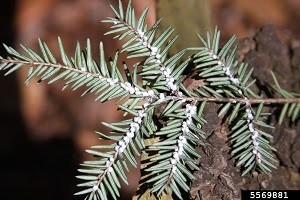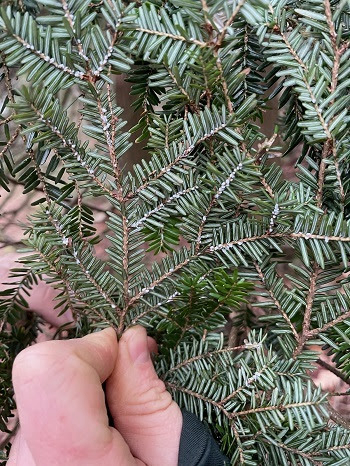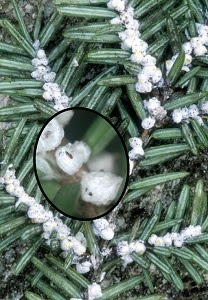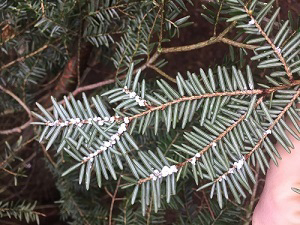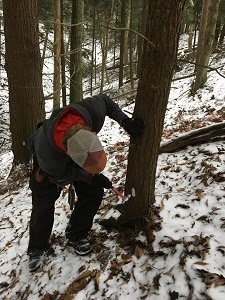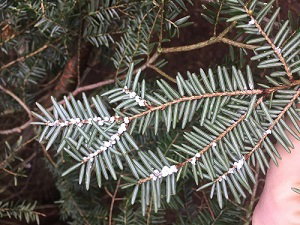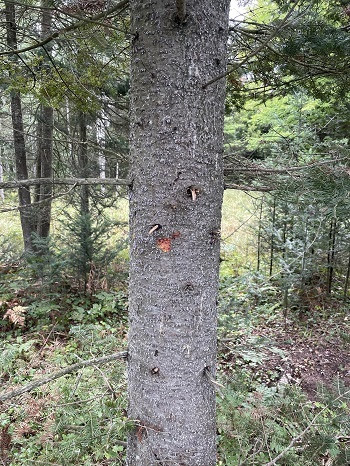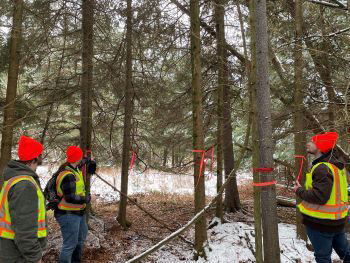Michigan: hemlock woolly adelgid found at a Washtenaw County arboretum
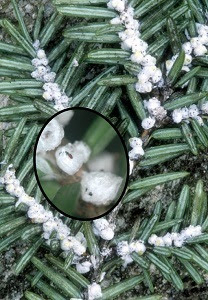
This makes the seventh MI county with an HWA detection
LANSING – The Michigan Department of Agriculture and Rural Development (MDARD) recently verified the detection of invasive hemlock woolly adelgid at Nichols Arboretum in Washtenaw County on May 9, 2023. This detection makes Washtenaw County the seventh county in Michigan to have a confirmed infestation.
“Our team of invasive species specialists is currently working with the arboretum to determine an appropriate treatment and response plan,” said Mike Philip, MDARD’s Pesticide and Plant Pest Management Division Director. “There isn’t a way to determine how long hemlock woolly adelgid has been there or how it got there, but it’s possible HWA has been there for a number of years.”
Previously HWA detections have been found in Allegan, Benzie, Mason, Muskegon, Oceana, and Ottawa counties and have been within five miles of the Lake Michigan shoreline.
“Unlike western Michigan, where the other infestations are located, hemlock trees are not native to this region of the state,” added Philip. “Although the pest still poses a problem for homeowners who may have planted hemlock trees or where they may have been planted in other landscaping, this HWA detection does not pose a significant threat to Washtenaw’s natural resources and environment.”
| Hemlock woolly adelgids are small insects that use their long, siphoning mouthparts to extract sap from hemlock trees. Their feeding weakens needles, shoots, and branches. Over time, tree growth slows, and trees take on a grayish-green appearance. Without treatment, infested trees die within four to 10 years.
Though the tiny insects don’t move far on their own, they can be blown by wind or hitchhike on people, birds or mammals that encounter an infested branch. In a similar way, cars, boats, or RVs parked under infested trees may be able to transport the insects to new locations. |
Residents and park managers near the arboretum are encouraged to carefully examine their hemlock trees for hemlock woolly adelgid and if found, report it using one of the methods at the end of this article. Infestations are recognizable by the appearance of tiny “cotton balls” at the base of hemlock needles on the underside of the branch.
In early June, residential neighborhoods near the infestation will be visited to provide information on pest identification and reporting. Dates and locations of neighborhood visits will be posted on the Jackson Lenawee Washtenaw Cooperative Invasive Species Management Area website.
Steps Michiganders can take to prevent the spread of invasive species include:
- Leaving firewood at home and buying it where you burn it.
- Staying on trails to protect natural areas.
- Parking in open, paved areas, not in fields or under trees.
- Cleaning gear and vehicles before hitting the road.
- Reporting suspected infestations by one of the following means:
- Email the Michigan Department of Agriculture and Rural Development at MDA-Info@Michigan.gov.
- Call the MDARD Customer Service Center at 800-292-3939 between 8 a.m. and 5 p.m., Monday through Friday.
- Use the Midwest Invasive Species Information Network (MISIN) online reporting tool.
- Download the MISIN smartphone app and report from your phone.
For more information on hemlock woolly adelgid and other invasive species in Michigan, visit Michigan.gov/Invasives.

